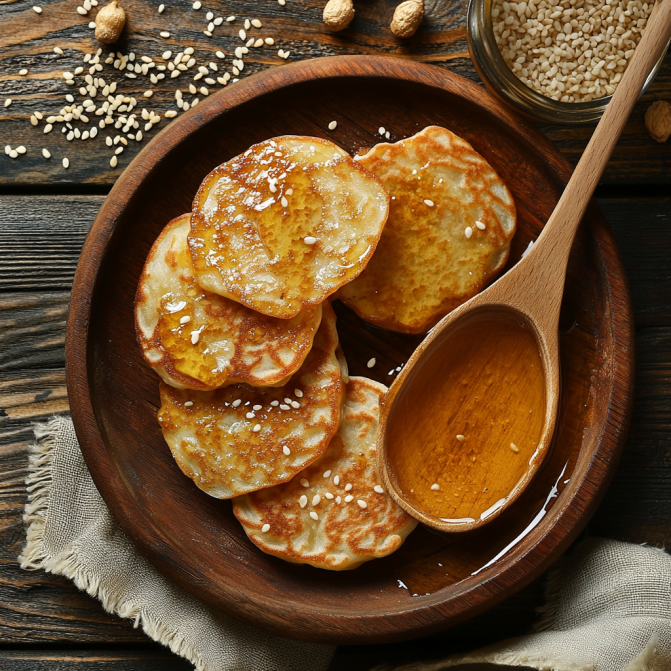Tēganitēs (tay-gah-NEE-tays)
Ancient Greek Pancakes
Delight in the simple yet satisfying taste of Tēganitēs, one of the earliest recorded pancake recipes from ancient Greece. These light and crispy pancakes are made from whole wheat flour and water, fried to perfection in olive oil, and traditionally drizzled with honey and sprinkled with sesame seeds. Ideal for breakfast or a sweet snack, Tēganitēs offers a glimpse into the culinary traditions of ancient Greek cuisine.
Recipe Directions
1. In a medium bowl, combine whole wheat flour and salt. Gradually add water, stirring continuously until a smooth batter forms.2. Heat a generous amount of olive oil in a frying pan over medium heat until shimmering.
3. Pour a small ladleful of batter into the pan, spreading it thinly to form a pancake. Fry until the edges are golden and the surface is set, then flip and cook the other side until golden brown.
4. Remove the pancake from the pan and place it on a plate lined with paper towels to absorb excess oil. Repeat with the remaining batter, adding more olive oil to the pan as needed.
5. Drizzle the warm pancakes with honey and sprinkle with sesame seeds, if desired. Serve immediately.
Notes:
History
Tēganitēs, derived from the Greek word "tēganon" meaning frying pan, are among the earliest documented pancakes, dating back to the 5th century BCE. Mentioned in the works of poets like Cratinus and Magnes, these pancakes were a common breakfast food in ancient Greece. Typically made with simple ingredients such as flour, water, and olive oil, and sweetened with honey, tēganitēs exemplify the straightforward yet flavorful nature of ancient Greek cuisine.
Ingredients
1 cup (120 g) whole wheat flour1 cup (235 ml) water
2 tablespoons honey
1/4 teaspoon salt
Olive oil, for frying
Sesame seeds, optional
Additional honey, for serving
Item type
Consumable, Food / Drink
Related ethnicities

















